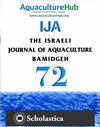从韩国两个养殖场获得的太平洋牡蛎长牡蛎种群的mtco1种群结构和遗传多样性
IF 0.5
4区 农林科学
Q4 FISHERIES
引用次数: 0
摘要
自20世纪90年代初以来,气候和人为因素导致了太平洋牡蛎(长牡蛎)野生种子的减少,这引起了人们对遗传多样性丧失和加速遗传退化的担忧。我们评估了来自南部海岸两个养殖场(统营和加德岛)的巨牡蛎种群的遗传多样性,韩国大约80%的养殖牡蛎产自这里。统营种群多样性略高于加德岛种群,但遗传结构相似,核苷酸多样性低。比较单倍型分析提供的数据支持种群的遗传特征,包括:(1)弱基因型-地方关系,(2)种群之间的基因流动水平低,(3)种群内遗传变异可能存在季节性波动。此外,在野生种群和养殖种群之间以及邻国种群之间观察到高度相似的单倍型网络模式,这表明野生种群和孵化场种群之间的遗传结构是保守的,地理邻近对遗传组成的影响很小。本文章由计算机程序翻译,如有差异,请以英文原文为准。
mtCO1-based population structure and genetic diversity of Pacific oyster Crassostrea gigas populations acquired from two farms in South Korea
Since the early 1990s in South Korea, climatic and anthropogenic factors have incurred the reduction of the wild seeds of the Pacific oyster, Crassostrea gigas, which raised concerns about losing genetic diversity and accelerating genetic deterioration. We assessed the genetic diversity of C. gigas populations from two farms (Tongyeong and Gadeokdo) on the southern coast, where about 80% of the cultivated oysters in Korea are produced. Tongyeong showed slightly higher diversity than Gadeokdo, but both populations had a similar genetic structure characterized by low nucleotide diversity. Comparative haplotype analyses provided data supporting genetic features of the populations that include (1) weak genotype-locality relationship, (2) low levels of gene flow between populations, and (3) possible seasonal fluctuation of genetic variation within a population. Furthermore, the highly alike haplotype network patterns were observed between the wild and farm populations as well as among the populations in neighboring countries, which suggests that the genetic structure is conserved between wild and hatchery populations, and geographic proximity has minimal influence on the genetic composition.
求助全文
通过发布文献求助,成功后即可免费获取论文全文。
去求助
来源期刊
CiteScore
0.90
自引率
16.70%
发文量
49
审稿时长
3 months
期刊介绍:
Information not localized

 求助内容:
求助内容: 应助结果提醒方式:
应助结果提醒方式:


